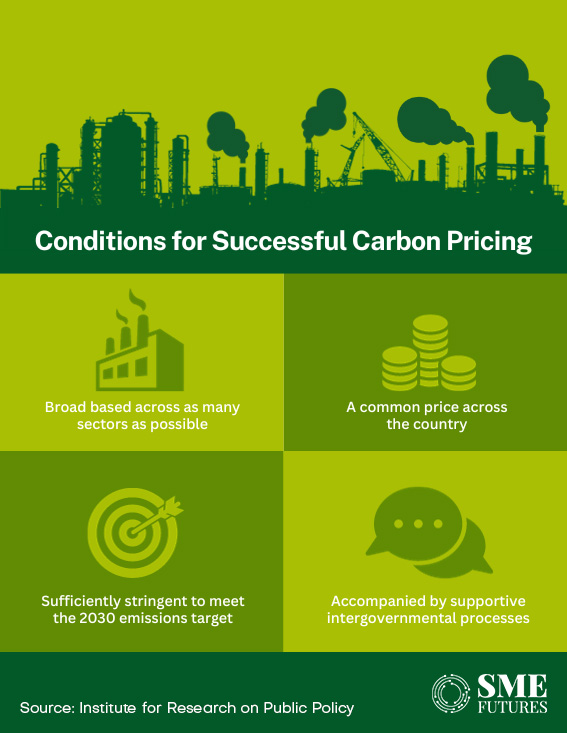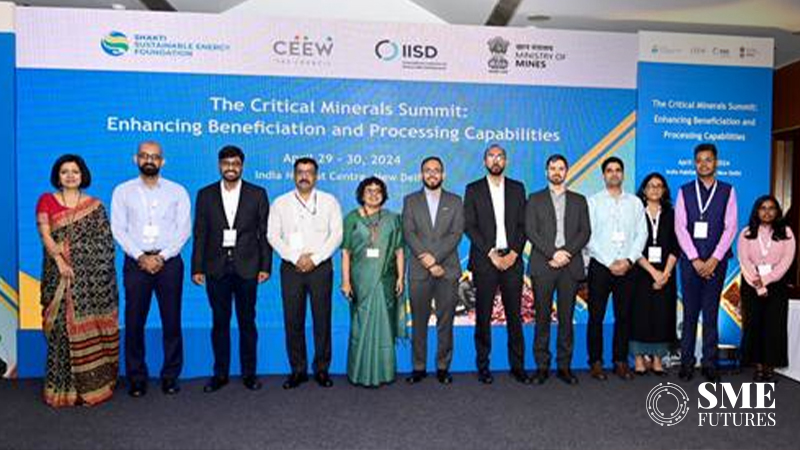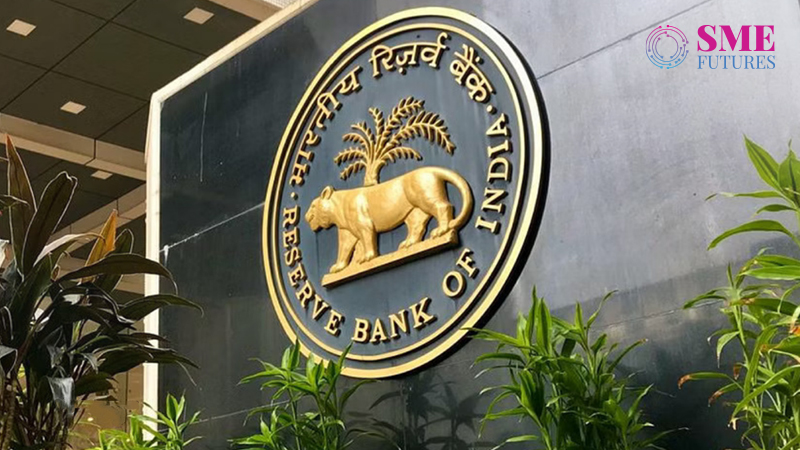Navigating the Carbon tax conundrum: A global perspective
Dive into the world of Carbon Adjustment Taxes: How global industries are reshaping practices, overcoming challenges, and embracing sustainability.
Neil Banerjee January 8, 2024

MORE IN Focus
It’s rush hour for gold in 2024, and India inc is riding new trends
IPL’s impact on hospitality: Boosting tourism, hotel bookings, and revenue surge
Will 45-day payment rule revolutionise MSME support?
The future of digital banking: Lessons from Paytm Payments Bank’s regulatory hurdles
Empowering women imperative for inclusive development in India
The global economic landscape is undergoing a seismic shift as developed nations introduce innovative mechanisms to combat climate change. At the forefront of this transformation is the Carbon Adjustment Tax, a potent tool aimed at reshaping industries and fostering sustainable practices.
The introduction of the Carbon Adjustment Tax, particularly through mechanisms like Carbon Border Adjustment Mechanism (CBAM), signifies a paradigm shift in global economic dynamics. Companies are not merely adapting; they are leading the charge towards sustainable practices. As Finance Minister Nirmala Sitharaman rightly advocates for inclusivity in global thought processes, industries worldwide are realising the importance of collaborative efforts in achieving green goals.

The essence of Carbon Border Adjustment Tax
“The Carbon Adjustment Tax is a fee imposed on companies burning fossil fuels, aiming to induce a shift towards cleaner, renewable options. It places a price on carbon emissions, encouraging businesses to adopt sustainable practices,” says Fatima Naqvi, Partner at Optimyze Finance LLP.
“This strategic move not only encourages companies to curtail carbon emissions but also harmonises India’s policies with the EU’s stringent carbon reduction objectives,” says Nidhi Mehra, Co-Founder, MyPlan8.

This mechanism, also known as Carbon Pricing, holds companies accountable for their carbon footprint. Implemented by 27 countries, it increases production costs for goods reliant on carbon-rich fuels. The European Union’s Carbon Border Adjustment Mechanism (CBAM) extends this principle to imports, heralding a new era in global trade.
CBAM and industry competitiveness
“The success of CBAM in boosting industry competitiveness hinges on effective execution, regional variations in carbon pricing, and the industry’s adaptability. It’s an opportunity for companies to prioritise sustainability and long-term viability,” says Harsh Choudhary, Co-founder and CEO, sentra.world.
“As the European Union (EU) fortifies its commitment to climate neutrality through the Carbon Border Adjustment Mechanism (CBAM), industries worldwide brace for transformative shifts,” Mehra points out.
While CBAM poses challenges such as increased costs and competitive disadvantages, it sparks innovation and adaptation. Companies in regions with stringent environmental regulations may invest in sustainable practices, fostering a market shift favouring greener solutions.
“The CBAM transcends borders, heralding a paradigm shift. Global companies, especially in climate tech and ESG, face a confluence of challenges and opportunities,” she adds.
Ensuring compliance with carbon emissions data sharing
“The EU’s directive to share carbon emissions data is a crucial step. Compliance requires thorough data gathering, standardised reporting, and third-party validation. Technological solutions are vital for seamless reporting, and cooperation among industries is key,” says Priya Prakash, Co-founder, Eco Pallet.
“To bolster transparency, Indian companies are now mandated to report comprehensive Environment, Social, and Governance (ESG) metrics through the Business Responsibility and Sustainability Report (BRSR),” says Mehra.
To align with the EU’s data-sharing requirements, industries are urged to adopt technological solutions and promote cooperation. This shift not only ensures compliance but also sets the stage for a data-driven approach to carbon reduction.
“As the European Union’s (EU) stringent carbon emissions data sharing requirements started on October 1, 2023, India is orchestrating a multifaceted strategy for alignment and sustainability,” Mehra adds.
Green initiatives in production and the rise of green finance initiatives
“Our commitment to sustainability remains unwavering. The Eco Life Pallet, made from recycled wood, exemplifies our dedication. Aligning with green initiatives is not just a response to potential tax regulations but a fundamental ethos of our company,” says Prakash.
“In the midst of the border adjustment tax discourse, Indian companies are spearheading a transformative journey towards sustainability and aligning with global green initiatives,” Mehra contends.
In fact, companies like Eco Pallet are actively pursuing sustainable production methods. This involves using recycled materials and designing products that contribute to a circular economy.
“Green finance initiatives, including the issuance of green bonds and the adoption of sustainable investment strategies, are gaining momentum in India. This financial paradigm shift is propelling the nation towards a greener economy,” Mehra asserts.
Financing sustainability emerges as a critical aspect of the evolving landscape as green finance initiatives gain traction. This shift in financial paradigms reflects a broader recognition of the economic opportunities embedded in sustainable practices.
Inclusive global thought process: Sitharaman’s call for unity
“Finance Minister Sitharaman rightly flags the moral implications of unilateral border adjustment taxes. A global thought process must be inclusive, considering developmental stages and fostering collaboration in achieving green goals,” Mehra remarks.
“FM Sitharaman’s call for inclusivity isn’t just a policy stance; it’s a reflection of the intricate dance between environmental and economic narratives,” Mehra underlines.
The call for inclusivity by FM Sitharaman resonates globally. The concept of “Inclusive Green Growth” emphasises collaboration and acknowledges the interconnectedness of environmental and economic policies.
In the face of potential carbon taxes on imports and exports, industries are not merely reacting; they are proactively adjusting their practices. This involves innovation, supply chain optimisation, and a strong emphasis on sustainability.
“Strategic considerations include the development of a domestic carbon pricing mechanism, encouraging emission reduction,” Choudhary says.
As the discourse on carbon taxes unfolds, it’s imperative to explore additional dimensions that underscore the complexities and nuances of this transformative journey.
Challenges on the horizon
“The implementation of CBAM can be a threat as well as an opportunity for companies. Those who have effectively calculated their emissions and are aligned with the necessary regulations stand a chance to gain a competitive edge,” Choudhary contends.
While the intention behind CBAM is to encourage sustainability, the immediate challenges are clear. Companies in regions with higher carbon footprints may face increased costs, potentially resulting in competitive disadvantages. This creates a delicate balance for industries to navigate, requiring strategic adjustments to maintain competitiveness in a global market.
“Companies in regions with less stringent environmental regulations or lower carbon prices might have a cost advantage, potentially undercutting pallet manufacturers subject to CBAM,” states Choudhary.
However, amid challenges lie opportunities. The potential resulting from the shift in market dynamics could serve as a catalyst for innovation and sustainable practices. Industries may find themselves redefining their strategies, exploring eco-friendly materials, and optimising their production processes.

The potential imposition of border adjustment taxes has triggered legal considerations, with countries like India exploring avenues at the World Trade Organisation (WTO). This legal dimension adds layers of complexity to the global discourse on carbon taxes.
The role of technology in carbon emission reporting
“While certification is not required for CBAM reporting, ensuring the high quality of data is crucial. Larger steel companies may encounter significant challenges when performing these tasks repeatedly, highlighting the need for suitable digital tracking tools,” says Choudhary.
The transition towards sustainable practices necessitates robust tools and technologies for accurate carbon emission reporting. The emphasis on technology adoption is not only for compliance but for establishing a foundation for effective carbon management. Digital tracking tools tailored to specific industry needs become instrumental in streamlining the reporting process.
“To simplify reporting processes, it was advised to adopt technological solutions such as emissions tracking systems and integrating supply chains,” says Prakash.
Technological innovation becomes imperative for industries seeking to align with evolving regulations and proactively reducing their environmental impact.
Changing consumer dynamics
“The impact could be as huge as USD 8 billion in exports to the EU,” says Naqvi.
As industries grapple with the challenges of carbon taxes, consumer behaviour plays a pivotal role. The rise of environmentally conscious consumerism can reshape market dynamics. Companies aligning with sustainable practices may find themselves not only compliant with regulations but also appealing to a growing demographic of consumers who prioritise eco-friendly products.
In fact, the prospect of carbon border adjustment mechanisms can become a stimulus for innovation in manufacturing technologies. This forward-looking approach will position industries at the forefront of sustainability, ensuring long-term viability.
A holistic perspective on Carbon Taxes

The discourse on carbon taxes extends far beyond regulatory frameworks and tax implications. It delves into the intricate dance between industries, technology, legal considerations, consumer dynamics, and proactive initiatives. The resulting challenges are counterbalanced by opportunities for innovation, collaboration, and the rise of sustainable practices. As the world navigates this transformative journey, the synergy between regulatory bodies, industries, and consumers becomes paramount. The carbon tax conundrum is not merely a challenge; it is a call to action for a harmonious and sustainable future.











